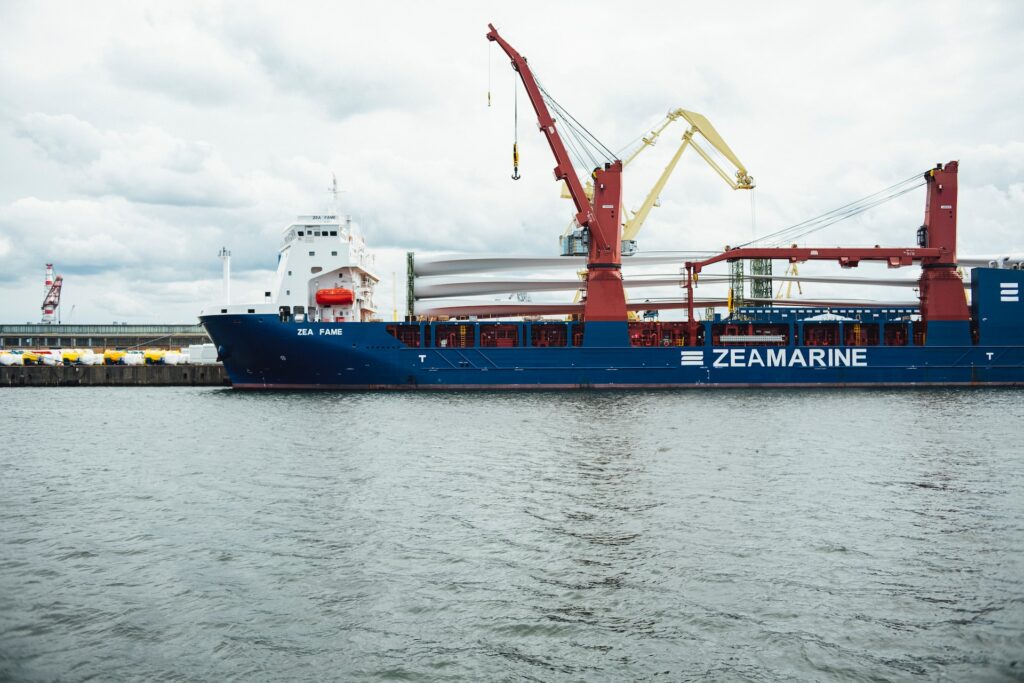Cross docking is a type of warehouse process that involves the unloading of goods from an incoming truck and then loading these goods onto an outgoing truck without intermediate storage.
It is designed to speed up the flow of inventory and reduce the cost of handling materials by eliminating the need for an intermediate storage area. By design, cross docking should not require any significant modification to standard operating procedures in most businesses.

What is cross docking ?
Cross docking is a logistics system where incoming goods are transferred directly to outgoing vehicles without being stored in a warehouse first. This can be done either manually or using automated conveyor belts.
Cross docking can be used for both full truckloads and smaller shipments. The main advantage of cross docking is that it reduces handling time and costs, as goods only have to be moved once instead of twice.
This can also lead to faster turnaround times for deliveries.
Additionally, cross-docking can help to improve the accuracy of shipments, as goods are less likely to become lost or misplaced in a warehouse. As a result, cross-docking can be an efficient and effective way to manage logistics operations.
Pre-distribution cross docking
Pre-distribution cross-docking is a strategy that uses cross-docking to improve inventory management and transportation efficiency. In pre-distribution cross docking, inbound shipments are unloaded and sorted at a central location before being delivered to their final destination.
This sorting process helps to ensure that the correct products are delivered to the correct locations and that excess or damaged inventory is removed before it reaches the shelves.
Pre-distribution cross-docking can be used to improve transportation efficiency by reducing the need for multiple shipments of the same product to different locations. It can also help to reduce warehousing costs by eliminating the need to store excess or damaged inventory.
Post-distribution cross docking
This is a type of cross-docking where products are shipped to retailers and then redistributed to other stores or warehouses as needed. This can help reduce inventory levels and transportation costs while ensuring that products are delivered quickly and efficiently.
Post-distribution cross-docking can be used for a variety of different products, including perishable goods, seasonal items, and overstocked merchandise. It is a particularly useful tool for retailers who operate in multiple locations and need to move products around quickly and efficiently.
When using post-distribution cross-docking, it is important to have a good understanding of your product flow and how it will be affected by the redistribution of products. This will help you to optimize your distribution network and ensure that you can meet customer demand.
What businesses use cross-docking?
Companies seeking faster delivery times
Companies that are looking to improve their delivery times are increasingly turning to cross-docking. Cross-docking is a logistics strategy where shipments are unloaded from inbound vehicles and loaded directly onto outbound vehicles, with little or no storage in between.
This can help to reduce lead times and shipping costs, as well as improve inventory management. One company that has been using cross-docking to great effect is Amazon.
Businesses that handle sensitive or perishable goods (medical, food and beverage, chemical, etc)
Businesses that handle sensitive or perishable goods often use cross-docking to ensure that their products stay fresh and in good condition. Cross-docking allows businesses to receive shipments of goods and then immediately ship them out again without having to store the products for any length of time.
This reduces the chance that the products will be damaged or spoiled before they reach their final destination. Cross-docking can be used for a variety of different types of products, including food, pharmaceuticals, and even flowers.
Ecommerce using multiple suppliers
Cross-docking is a shipping method used by eCommerce fulfillment companies that utilize multiple suppliers. In cross-docking, products from various suppliers are shipped to a central location where they are sorted and then re-shipped to the customer.
This method eliminates the need for warehousing and can help reduce shipping costs. Cross-docking can be an efficient way to manage inventory and reduce shipping costs, but it requires careful coordination between suppliers and the eCommerce company.
Automotive suppliers
Automotive suppliers use cross-docking to save time and money. By loading products onto outbound trucks while unloading inbound trucks, automotive suppliers can avoid the cost and delays associated with traditional shipping methods.
Cross-docking also reduces inventory levels, which helps to save on storage costs. Automotive suppliers who use cross-docking can improve their bottom line while providing their customers with faster, more efficient service.
Benefits of cross docking
More efficient logistics
Cross docking allows for more efficient logistics by allowing products to be loaded and unloaded from trucks quickly and efficiently. This reduces the time that products spend in transit, which can save money on shipping costs.
Additionally, cross-docking can help to reduce inventory levels by ensuring that products are only stored for a short period before being shipped out. Cross-docking is a logistics method that can save businesses time and money.
For less-than-truckload (LTL) shipping, cross-docking can be used to transfer small shipments from an incoming truck to an outgoing truck, bypassing the need for traditional warehouse storage. This can help reduce costs and improve efficiency by eliminating the need to handle and store the goods during the intermediate stages of transportation.
Decreasing business costs
Cross docking is a logistics technique that can be used to decrease business costs. Cross docking involves the transfer of goods from one mode of transportation to another without the need for storage or warehousing. This can reduce the time and cost associated with traditional shipping methods, as well as increase efficiency and reduce waste.
There are a number of benefits that can be gained from using cross-docking to decrease business costs. First, cross-docking can reduce the time needed to ship goods from one location to another.
This is because goods can be transferred directly from one mode of transportation to another, without the need for storage or warehousing. This can save businesses a significant amount of time and money.
How to integrate cross docking into your business
Identify if your business needs cross-docking
As a business owner, you’re always looking for ways to streamline your operation and make it more efficient. One way to do this is to integrate cross-docking into your business. But before you can do that, you need to first identify if your business needs it.
There are several factors you need to consider when making this decision.
First, take a look at your product mix. If you sell a lot of small items that need to be individually packaged, then cross-docking is probably not for you. On the other hand, if you sell large items that can be palletized and shipped as-is, then cross-docking could be a good fit.
Another factor to consider is your shipping volume. If you ship a lot of orders each day, then cross-docking can help you save time and money. However, if you only ship a few orders each day, then the benefits of cross-docking may not be worth the investment.
Find a cross-docking facility that meets your needs
As your business grows, you may find that you need to integrate cross-docking into your operations to keep up with customer demand. Cross-docking can help you improve your order fulfillment process by reducing the time it takes to get products from the warehouse to the customer.
But before you can start using cross-docking, you need to find a cross-docking facility that meets your needs. When you’re looking for a cross-docking facility, there are a few things you’ll need to keep in mind. First, you’ll need to make sure that the facility is large enough to accommodate your volume of shipments.
You’ll also want to make sure that the facility is located close to your customers so that you can minimize shipping times. Finally, you’ll want to make sure that the facility has the necessary infrastructure in place to support your cross-docking operations.
Use delivery management software to optimize and track the system
If you’re looking to incorporate cross-docking into your business, one of the best ways to do so is by using delivery management software. This type of software can help optimize and track your cross-docking system, ensuring that it runs smoothly and efficiently.
There are several different delivery management software programs on the market, so it’s important to choose one that will fit your specific needs. Once you’ve selected the right software, you’ll be able to track and manage all aspects of your cross-docking system, from inventory and shipments to tracking and reporting.
This type of software is an essential tool for any business that relies on cross-docking for its operations to gain a complete view of your cross-docking system, allowing you to make necessary changes and adjustments as needed.
Crossdocking made easier with Detrack
Cross docking can be an extremely beneficial process for business owners who want to improve their efficiency and bottom line, but you don’t have to do it alone. Detrack’s powerful delivery management software provides real-time visibility throughout the supply chain helping to reduce costs, damages, and errors. Create an account and try Detrack today.













